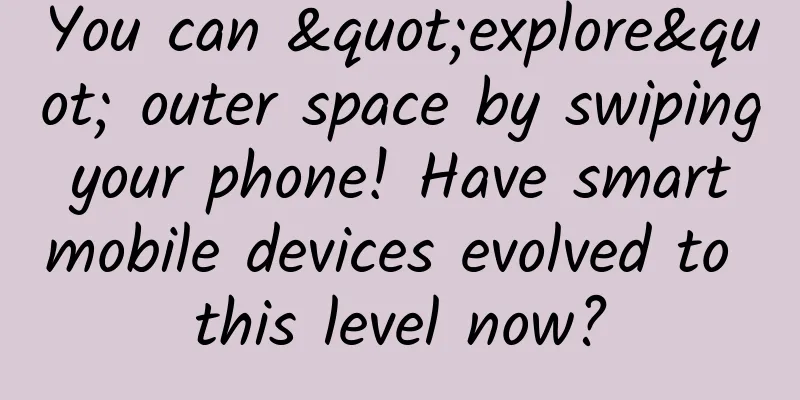You can "explore" outer space by swiping your phone! Have smart mobile devices evolved to this level now?

|
Using millions of Android smartphones around the world, scientists have created one of the most detailed maps of Earth's ionosphere to date Ordinary smartphones may become powerful tools for exploring outer space . Researchers have turned millions of Android smartphones around the world into an army of flexible scientific instruments, creating one of the most detailed maps of Earth's ionosphere to date, which could improve the accuracy of global GPS technology by several times. The study was led by Brian Williams of Google Research and co-authored by Professor Jade Morton of the Department of Aerospace Engineering Sciences at the University of Colorado Boulder. The results were published in the journal Nature on November 13. Using GPS sensors found in standard smartphones, the researchers collected data on how Earth's atmosphere distorts satellite signals, allowing them to observe atmospheric phenomena in unprecedented detail, such as clumps called plasma bubbles high in the Earth's atmosphere. Now that the data has been made publicly available, anyone can see how the atmosphere rotates and changes over a period of about eight months. The study focused on the ionosphere, a part of the atmosphere that extends about 50 to 1,500 kilometers above the Earth. The atmospheric molecules and atoms in it, under the influence of solar radiation, split into charged particles, which scientists call plasma. Usually, at 2 pm, when solar radiation is strongest, there are more charged particles in the ionosphere, but at night there are very few charged particles. However, fluctuations in the number of charged particles in the ionosphere can seriously affect GPS positioning. Fluctuations in the number of charged particles in the ionosphere can seriously affect GPS positioning When GPS positioning is used, the positioning satellite in space will first transmit radio waves to the earth, and the positioning devices such as mobile phones determine the location by measuring the time required for the signal to reach the ground. Since the fluctuation of the ionosphere affects the propagation speed of radio waves, the positioning device will have significant errors when calculating the distance to the satellite, which is also one of the biggest sources of geographic positioning errors. By using radar antennas on the ground, scientists can map the ionosphere to understand the impact of the ionosphere on the time it takes for positioning satellite signals to reach the earth. However, this method can only observe about 14% of the ionosphere at a time. Therefore, the positioning displayed by the GPS device may be off by a few feet to tens of feet (1 foot is about 0.3 meters). A map of the ionosphere generated from 10 minutes of mobile phone data shows the concentration of charged particles in different parts of the world. In a new study, researchers proposed an unusual idea : abandon expensive radar antennas and instead use sensors that exist in every country on Earth to map the ionosphere: Android phones. Relying on this global army of phones, about 21% of the ionosphere can be observed at a time, which is expected to double the accuracy of global GPS devices. The team's maps also capture the ionosphere in amazing detail. The team's phones were watching as a powerful solar storm hit Earth in May 2024. In the hours that followed, giant "plasma bubbles" containing low concentrations of charged particles formed over parts of South America. These bubbles then passed through the ionosphere like wax in a lava lamp. Morton believes that their research shows that the everyday technology that people are accustomed to still has untapped potential. "I have spent my life building instruments specifically for scientific research," Morton said, "but as society progresses, the sensors around us are more powerful than we imagined." References https://techxplore.com/news/2024-11-smartphones-instruments-space.html Compiled by: Wen Xing Reviewer: Liu Yong, Researcher at the National Space Science Center of the Chinese Academy of Sciences, Ambassador of China's Space Science Popularization |
<<: I brush my teeth every day, but why does it still hurt?
>>: #千万IP创科普# Beware! Up to 800℃! This "bedding" can be fatal if it catches fire
Recommend
2019 Pinduoduo user operation analysis!
This paper mainly analyzes the basic attributes, ...
Sitting for a long time and having back pain? One move can help you!
As an adult, who hasn’t experienced lower back pa...
During the start of the school season, how can information flow advertising cleverly leverage marketing momentum?
When will the “longest winter vacation” in histor...
Titles always lack appeal? Let’s try the 4 principles + 6 elements of this title
As we all know, the number of readers of public a...
What are the categories of Tik Tok? What types of Tik Tok short videos are there?
Feng Chao from Dongguan divides Douyin short vide...
5 core strategies for brand promotion at Station B
Nowadays, Bilibili has become one of the most pop...
Community Operation | Master these 3 steps to make your community "live"
Most people who run communities have experienced ...
If we don’t do a good job in fighting corruption on the Internet, the company will be in trouble.
“Where there is a world of martial arts, there is...
Why do floods still occur in the 21st century? The most practical survival safety skills →
On May 12, 2023, the Science Popularization China...
What are the functions of Zhangye WeChat restaurant ordering mini program? How much does the WeChat food ordering app cost per year?
With the continuous development of the Internet, ...
Android immersive status bar and suspension effect
[[177375]] 1. Overview Now, the detail pages of m...
Bread crumbs scattered on Mars: Hansel and Gretel, please reply!
With "Martian Breadcrumbs" - an unprece...
Are the Beijing Winter Olympics commemorative banknotes made of plastic? In fact, the banknotes of these countries are not "paper" either
The ice sports commemorative banknote issued by t...
Marketing promotion: What else did Luckin Coffee do besides spending money to acquire users?
Today is the day when Luckin Coffee’s first 28% o...









